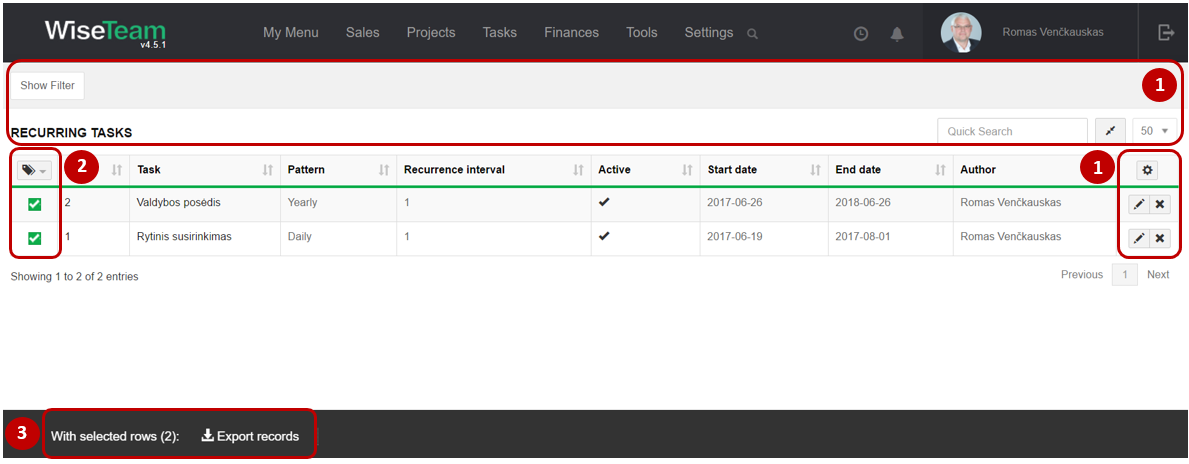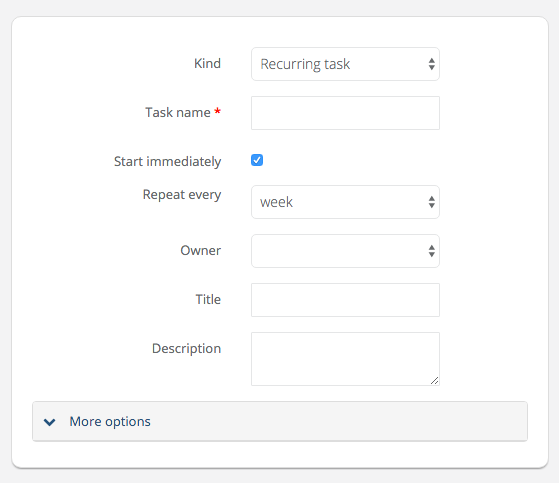
- Recurring tasks in microsoft to do software#
- Recurring tasks in microsoft to do code#
- Recurring tasks in microsoft to do download#
Overdue Recurring Tasks Outlook Regenerated Tasks I now show some overdue tasks, along with the current task. This worked fine until I didn’t make it a couple of times. For example, I created a task to occur each Tuesday and Friday to water a friend’s plants while she’s away. Most of these triggers are self-explanatory. Generally, the task repeats based on specific time triggers. Here are a few more charts that are included in our issue dashboard, including pie charts for "Issues by type," to view how many of each issue you have to do, a bar chart for "Time since issue," as well as one for "Resolution time" that tracks how long it takes for the average issue to be resolved, and bar charts that sort issue by priority, stage, or whatever other metric you want to review each issue type by.If you’re familiar with Microsoft Outlook, you’ve probably seen the option to create a recurring task. This provides accountability for the whole team, so progress is made (and documented) on active tickets in real time. As team members make progress on their individual issues, they can edit the progress bars of the active stage by changing the percent to completion next to the bar. In our Issue Tracker template, each issue type is color-coded, and type names are editable in the Fields tab. Gantt charts visually track the progress of your workflow across time, not just across stages, to assess how long each issue takes across each stage. So tracking these KPIs is vital not just for you but for your boss, your boss's boss… and maybe even your boss's boss! ( Source)Īn alternative visualization to kanban is a Gantt chart. These metrics as vital, as Gartner predicted that at least 50% of C-level executives will have performance requirements related to cybersecurity risk built into their employment contracts by 2026.

In our template, we created pie charts to track issues by their status and priority, as well as charts to track issue age, how many of each issue type are open, and all sorts of other helpful metrics for PMs. Speaking of key performance indicators, you'll also want to create some sort of dashboard to make issue tracking easier.

You should also provide some filters as we did at the top, especially if you are a manager or working with multiple team members so individuals can filter for their most important metrics.
Recurring tasks in microsoft to do code#
In Agile, the simplest workflow format is to have a backlog stage, an in-progress stage, a code review or quality assurance stage, and then a complete stage. Following the kanban style, they are color-coded by priority. This bug board utilizes a kanban visualization that works with the agile management style to sort issues by workflow stage. So, let's say you want to follow the agile framework that Jira uses.
Recurring tasks in microsoft to do download#
Remember - if you like our visualizations, you can download and customize our Issue Tracker template we created as well. In our example, we provide three visualizations: a bug board, a dashboard, and a Gantt chart. Okay, so now that you've loaded all the issues onto an issue list, you need a way to visually track all these issues. In our variation, each issue type is color-coded, and type names are editable in the Fields tab.

Your fields tab should also define the priority levels of your issues, who can open a ticket, the stages of your workflow, and the status of tickets. In our example, we define these inputs in the Fields tab here. Your issue tracker issue list should sort issues by type. So if you're a PM who needs to manage a massive project, you place it in an epic, broken down into stories, tasks, and sub-tasks. "Epics" help team leads to manage the user journey and bucket-related tasks, while "user stories" are requests and needs in a customer's user journey. Then, the issues' type is listed, whether it's a bug, new feature, task, sub-task, story, or epic, which is an issue ticket that represents an overarching project that is broken down into specific tasks which are called user stories.

Recurring tasks in microsoft to do software#
Each ticket also has its own ID key, which can be defined by us, or by the ticketing software we use. A chart at the top shows resolver availability so managers know whose schedule is the most open to assign new issues. Reporters can either be internal team members or external customers who experience issues. To make ours, we started by making an issue list to track open tickets, then divided that list into a reporter section for whoever opens the ticket and a resolver section for whoever is assigned the ticket. This is an Issue Tracker spreadsheet template we created and is meant to complement whatever issue tracker software system you use.


 0 kommentar(er)
0 kommentar(er)
